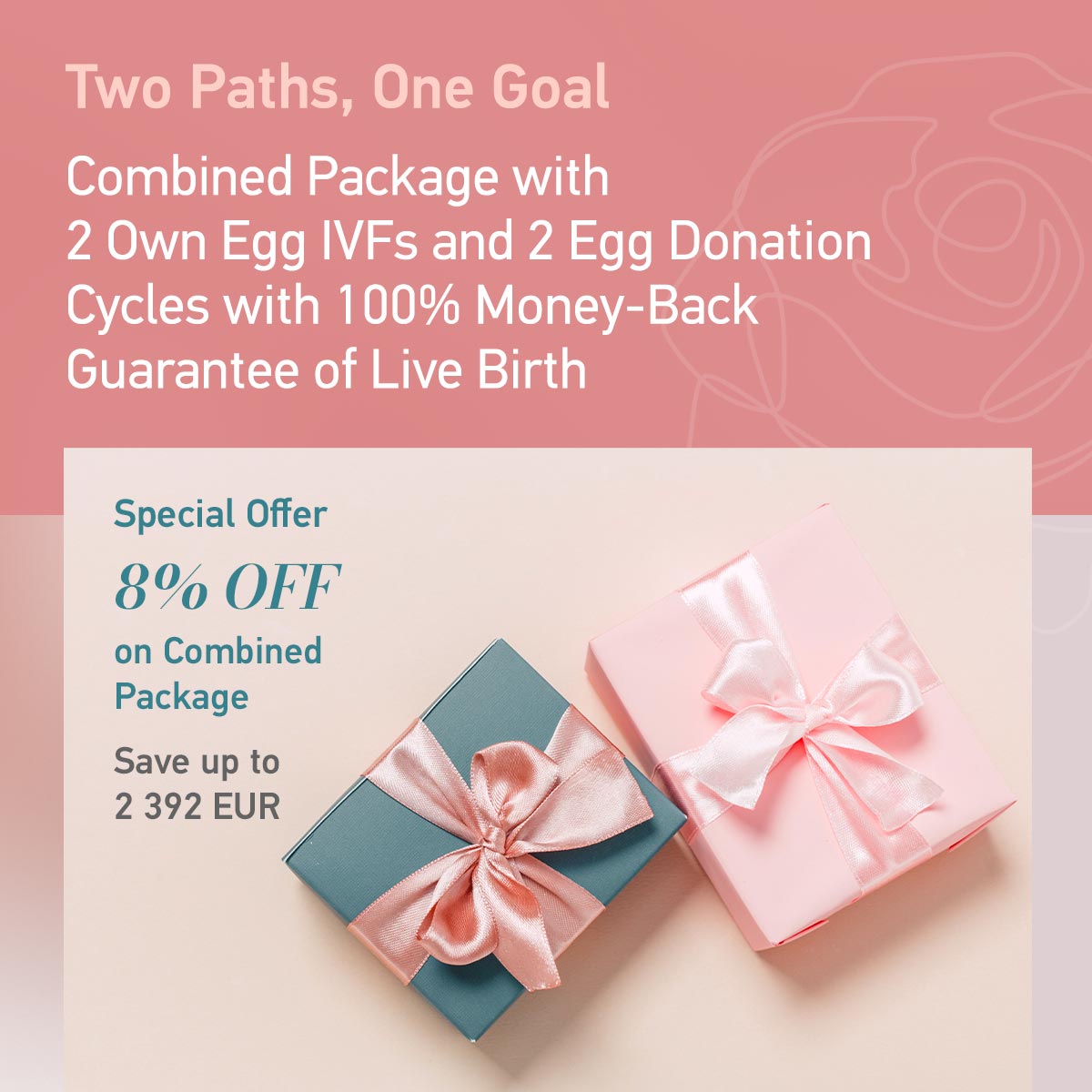Artificial insemination is a procedure for transferring sperm into the uterine cavity. Insemination is the simplest, but still efficient method of assisted reproductive techniques (ART).
Insemination may be recommended for treatment of single women, lesbian couples or for infertility due to: moderate reduction of the sperm quality, cervical factor infertility, unovulation, immune infertility, and "unexplained" (idiopathic) infertility. The prerequisite for insemination is a preserved functioning of uterine tubes.
The generalized pregnancy rates for one insemination treatment cycle average about 15-20%. Whether an insemination will be successful considerably depends on a number of prognostic factors: infertility duration, woman’s age, spermogram readings, and the number of preceding insemination attempts.
It is not recommended to undergo more than 3-4 insemination attempts. For, 87% of patients, who conceive from insemination procedure, become pregnant within 3-4 insemination cycles. The pregnancy rates for those who still can’t conceive and who continues insemination attempts do not exceed 6% per one attempt. While cumulative results from first three cycles total to 39.2%, efficacy of 6 cycles will not exceed 48.5%. For this reason, after 3-4 unsuccessful insemination attempts an IVF treatment should follow.
If you are unsure whether IUI (Artificial Insemination) is the right treatment for you please request a FREE non-obligatory consultation with our Doctor who will be able to discuss your options with you based upon your own medical needs and wishes.
Prior to insemination itself, the stimulating treatment of the ovary is usually performed. To provide stimulation, the FSH-containing agents and antiestrogens are used. As revealed by the research, FSH-based stimulation proves to be more efficacious. Good results also can be achieved by combining FSH and antiestrogens.
There is an option to perform insemination in a natural cycle (without stimulation), but, such a procedure is 2-3 times less efficient than FSH stimulation preceded insemination.
There is abundant research evidence showing that, while applying the same stimulation routine, insemination is 2 times more efficient than the monitoring procedure aimed at identifying the optimal day for conception.

Fig. 1. Artificial insemination
- Catheter
- Spermatozoa

Fig. 2. Intrauterine insemination (IUI)
If your husband or partner is providing the sperm sample, they will be required to do this on the day of insemination by masturbation.
If you are using donor sperm for your IUI this will be thawed ready for the insemination.
Sperm donors
At O.L.G.A. Fertility Clinic we are proud to be able to offer you a donor with a basic profile from our own sperm donor database. Within the basic profile you will receive the following information about a sperm donor: age, blood group, height, weight, eye and hair colour. If however you would prefer to use one of the main european sperm banks so that you can choose your own donor and gain in-depth information and profiles of the donor we are more than happy to help you with the choice and sperm transportation to our clinic.
If you would like to find out more about different sperm donor options and how we can use this to meet your own personal needs please contact us for a free non-obliging telephone consultation.
Often women whose partners have reduced semen count or quality contact us to request IUI with donor sperm. It is surprising for them to find out that even if sperm quality is poor or the count is low it is not necessary at all to use donor sperm. For these couples we can offer IVF with ICSI. IVF/ICSI offers a much higher chance of success than IUI and ensure direct biological link to both parents.
To find out more about your options and possible suitability for using IVF/ICSI please request a FREE non-obligatory consultation with our Doctor, who will be able to discuss your options with you based upon your own medical needs and wishes.











































